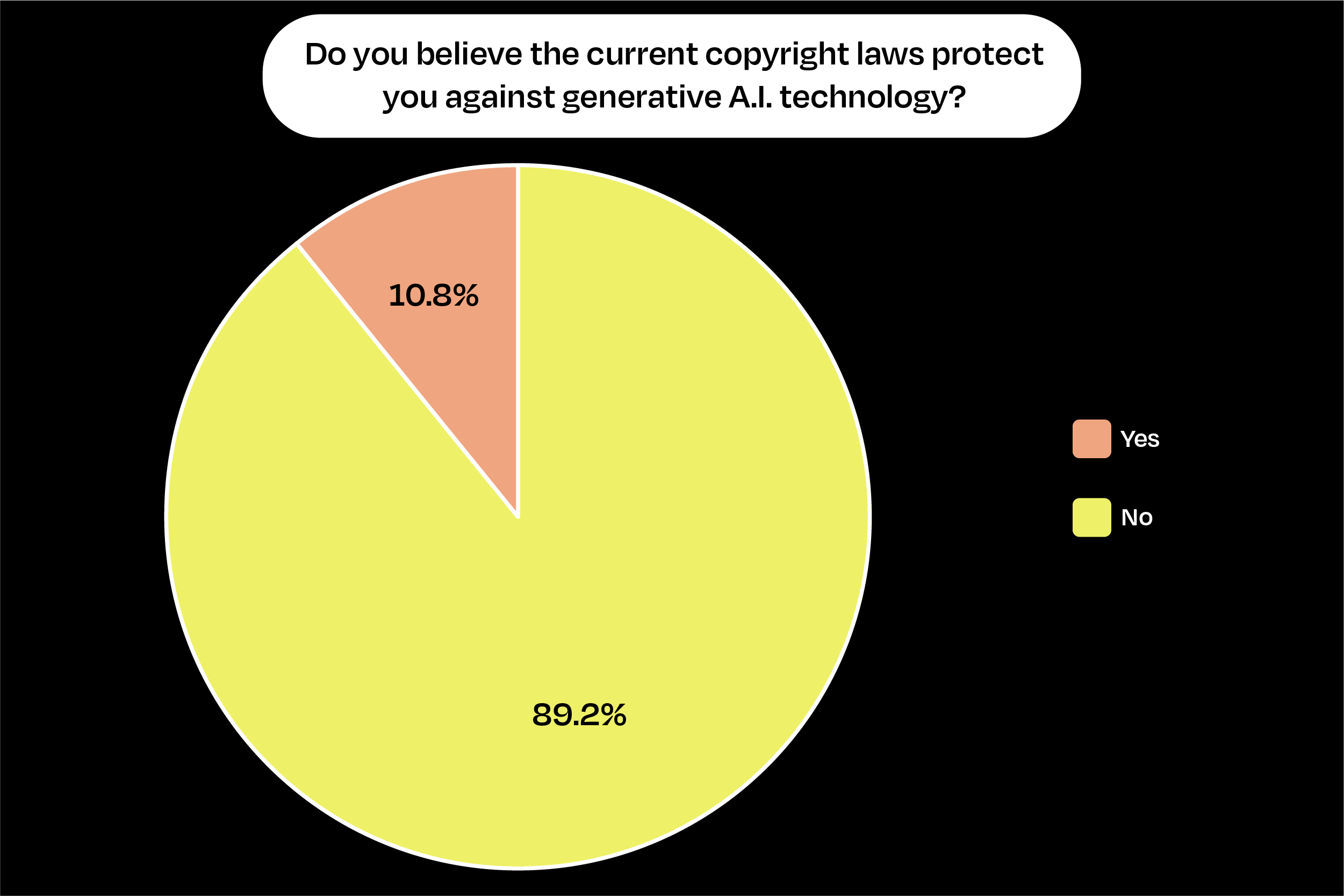AI Ethics in Visual Content Creation
Discover the ethical challenges of AI in visual content creation, including originality, copyright concerns, and its impact on the creative media industry.
Published on : July 6, 2024
Understanding AI in Visual Content Creation
AI in Visual Content Creation has revolutionized digital design, leveraging machine learning algorithms and neural networks to generate high-quality images, graphics, and artwork. Advanced tools like GANs (Generative Adversarial Networks) are widely used in graphic design, digital marketing, and advertising, providing efficiency and innovative capabilities. However, the rapid rise of AI-generated art has sparked debates regarding authenticity, originality, and copyright concerns.
For instance, DALL-E 2 by OpenAI generates hyper-realistic images from text descriptions, offering unparalleled creative possibilities for businesses and individuals. According to AI and the Challenge of Originality in Art
Originality is a fundamental aspect of artistic expression, but AI-generated content complicates this concept. AI art generation relies on vast datasets, blending different elements to create new visuals. While this enables innovation, it also raises concerns about intellectual property, originality, and creative authenticity.
Since AI-generated images are often derivative of pre-existing works, distinguishing between AI-created art and human-made designs is becoming increasingly difficult. This challenge fuels debates in the creative industry about what truly constitutes originality in the digital era.
According to ScienceDirect, research indicates a growing concern over the lack of familiarity and authenticity in AI-generated visuals, emphasizing the need for clearer ethical and legal guidelines in AI-driven content creation.
Copyright Concerns with AI-Generated Content
Copyright Challenges in AI-Generated Art
Current copyright laws struggle to address the complexities of AI-generated content, especially in the realm of visual art created by AI image generators. Traditional copyright frameworks assume human authorship, placing AI-generated works in a legal gray area.
One major case highlighting this issue is the copyright dispute surrounding the AI-generated painting "Portrait of Edmond de Belamy". As AI-generated art continues to gain prominence, the need for **updated copyright regulations** has become more urgent.
The Legal Debate Over AI-Generated Art
The "Portrait of Edmond de Belamy", created by the AI collective Obvious, sold for $432,500 at a Christie's auction. This sparked discussions on legal ownership and the rights of AI-generated content in the art market.
Moreover, a survey by Book An Artist found that **89.2% of artists** believe current copyright laws fail to protect them from **generative AI technology**.

Ethical Implications of AI in Visual Content Creation
Ethical Concerns in AI-Generated Art
Beyond **originality** and **copyright**, the rise of AI in visual content creation raises broader **ethical concerns**. Key issues include:
- Potential **displacement of human artists and designers** due to AI automation.
- Risk of **homogenized art** lacking **diversity and cultural depth**.
- Ethical concerns over the **datasets used to train AI models**, including bias and unfair representation.
One of the biggest concerns is the **impact on employment** in the creative industry. As AI tools take over tasks traditionally done by humans, there is a real risk of **job losses** and economic disruption for artists and designers.
AI's Impact on Jobs and Creativity
According to a report by McKinsey, AI could automate up to **30% of tasks** in the creative industry by **2030**, potentially affecting **millions of jobs**.
Additionally, AI-generated content often **reflects biases** present in its training datasets. This reliance on **non-diverse or skewed datasets** can lead to stereotypical and non-inclusive representations, limiting true artistic diversity.
Potential Solutions and Best Practices
Solutions & Best Practices for Ethical AI in Art
To address the **ethical challenges** of AI-generated content, we must establish clear **guidelines and best practices** that promote **transparency, fairness, and cultural diversity** in AI-created art.
✅ Key Strategies for Ethical AI in Visual Content
- Transparent Disclosure: Clearly label AI-generated artworks to ensure **audience awareness and ethical clarity**.
- Human-AI Collaboration: Encourage **synergy between AI and human creators** to maintain **artistic originality and cultural diversity**.
- Legal Reforms: Revise **copyright laws** to **include AI-generated content**, ensuring **fair protection** for both artists and consumers.
- Use Trusted AI Platforms: Leveraging **ethical AI tools** like Rainforest.Zone ensures **responsible AI-driven art creation**.
Ethical AI Development Framework
According to the Association for Computing Machinery (ACM), ethical AI development should prioritize:
- Transparency: Clear documentation on how AI models generate content.
- Accountability: AI developers and users should be responsible for the impact of AI-generated visuals.
- Fairness: Implementing **diversity checks** in AI training datasets to **prevent biases** and **promote inclusivity** in digital art.
Conclusion
AI is revolutionizing visual content across social media, marketing, and creative industries. However, with its rapid advancement, it also raises critical ethical considerations, including originality, copyright protection, and fairness in AI-generated art.
The Path Forward: Ethical & Responsible AI
To fully harness AI’s potential, we must establish a balanced approach that fosters both innovation and ethical integrity. By implementing:
- ✅ Clear copyright guidelines for AI-generated content
- ✅ Fair and bias-free AI models trained on diverse datasets
- ✅ Human-AI collaboration to preserve creativity and artistic diversity
- ✅ Transparency & accountability in AI development
The future of AI in visual content depends on our ability to leverage AI as an enabler, not a disruptor, of artistic expression. By prioritizing ethical AI development, we ensure that technology enhances creativity rather than replacing it.

24
likes
You may also like


By Ram Kumar K.
October 12, 2024
193
likes
